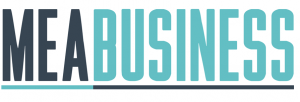The data stored in financial systems and other platforms is a potential treasure trove. Yet, many businesses are not taking full advantage of this valuable asset. Today’s powerful and intuitive business intelligence (BI) tools can change that, enabling business leaders to uncover insights and trends in their data that can open many business opportunities. This, in turn, helps them make business decisions based on better information.
Over the past few years, tools that put business insights into users’ hands have become easier to use, enabling them to easily generate their own reports without being data science gurus or technical whizzes. Since no coding is required, executives can gain insights as and when they need them.
Visualising data
The real power of these tools is that they allow your decision-makers to see graphical representations of their data, usually in reports or dashboards. These visualisations make it easier for people to see trends and understand the implications of the numbers than they would looking at rows of figures.
Today’s BI tools allow users to easily generate reports and dashboards based on pre-built, fully customisable data models and analytics. With just a few clicks, you can effortlessly transform your profit and loss ledger into a dashboard featuring a series of tables, charts and standout figures. Since the data flows from your financial software, it’s always up to date.
By visualising trends in your financial data, you can identify issues before they turn into major problems and spot opportunities before the chance to gain a competitive edge disappears. The types of dashboards and reports used across businesses of different sizes and in diverse sectors vary.
We have provided you with some examples of the typical basic dashboards a medium-sized business could find useful:
- Business snapshot
This is perhaps one of the most basic but useful dashboards – a visual summary of how your business is doing in terms of generating sales, managing expenses, and creating profits. It shows whether your business has made or lost money in the period under review, which can also help determine trends for future business decisions.
- Sales trend analysis
You might see that your revenues are going up or down, but that’s not enough on its own to act. A sales trend analysis dashboard can track sales performance month-on-month or year-on-year, and can break down sales by region, salesperson and customer, or by quotes and estimates. This can help you decide where to invest or where to deploy sales resources to create optimal growth.
- Financial hygiene
Monitoring cash flow is an essential ingredient to the survival and success of any business.
- Analysis of aged debtors
An analysis dashboard of aged debtors can provide an overview of who owes you cash and how much, and when you can expect to receive it from overdue customers.
Making the most of your data
BI enables you and your team to drive value from the increasing amounts of data that all businesses are generating today. The benefits range from basic efficiencies to being able to gain insights that enable you to seize a real competitive advantage. Today, the technology is so simple to use and easy to implement.




























